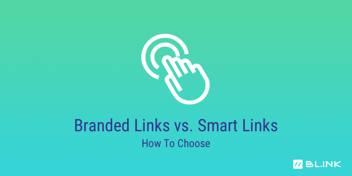
Listen to this blog
Content Curation: the Secret to Great Editorial Calendars
Original content is the holy grail of content marketing. It’s unique, in-depth, and brand new. Most importantly, it’s all yours. But anyone who’s done it knows that creating original content week after week can be a huge time investment. It requires advanced planning, research, several drafts, and reviews—and if you’re a solo business owner or part of a small team, you don’t have that kind of time.
An alternative is to find and share content by other leaders in your industry, also known as curating content. It helps you keep a consistent presence online and continue to build your own brand without being as time-intensive as creating everything from scratch. But how can you do that without losing your own unique voice? And what about your own brand’s important messages?
There’s room for both. By posting both original and curated content, you’re helping your audience understand your product or service in the larger context of your industry—from a broader perspective, and with your unique point of view.
You’re also filling your editorial calendar with meaningful, relevant topics, avoiding the all-too-common trap of becoming overly self-promotional, since promotional content tends to be the low-hanging fruit when you don’t know what else to cover.
In our previous post, BL.INK Advisor Neal Schaffer gave a content ratio that accounts for both original and curated content, as well as leaving room for specific promotions. Let’s look at how to use the ratio to create an editorial calendar that gives you the best of both worlds.
Content 9-1-1
The 9-1-1 ratio balances original (but time-consuming) and curated (but quick) content on your site, plus well-timed promotional content.
- 9 pieces of content curated from others, such as your advocates, important influencers, your customers, your partners, your fans, or peers in your industry (that aren’t direct competitors).
- 1 piece of original content that adds value to your audience.
- 1 piece of promotional content that describes your product or service.
Content 9-1-1 gives you the opportunity to plan your original pieces in advance while affording you the freedom to react and respond to what’s happening industry-wide.
Here’s what you can do to set up a 9-1-1 content system.
Identify the online conversations in which you want to participate
To get started, jot down a list of five to ten key messages about your brand and your industry.
Once you’ve identified your key messages, then determine which online conversations you want to join. For example, if you’re a digital marketing consultant with a key message that everything can be measured and optimized, you’d want to be a part of conversations about marketing KPIs, social media trends, and A/B testing.
If you’re a home organizer who strongly believes that a clean physical space creates inner peace, you’d want to be a part of conversations about feng shui, ideas for banishing clutter, the psychology around why and what we buy, and functional interior design.
Set up Google alerts with keywords that include these topics, and bookmark websites that regularly publish reputable content from respected leaders in these areas.
Find the thought leaders in your niche
Next, make a list of the most reputable people who are discussing these same topics. You’re looking for people who are engaged in the things tied closely to what you’re doing, and who hold the same values or want to accomplish the same goals—but who are not direct competitors.
A good way to find thought leaders is to look for books and publications on the topics you identified above, and add those authors to your list. Follow them on social media, and look at who *they* follow.
For example, if you’re a social media manager, you might look for digital strategists who advocate for social media as part of a strong digital presence. If you’re a restaurant owner, you might look for thought leaders in ethical food sourcing, food critics, or well-known travel experts who have featured your city.
Follow these thought leaders on social media, and again, set up Google alerts with their names, so that when they publish new content, speak at an event, are a guest on a podcast, or are mentioned in industry news, you’ll see it right away.
Note: You can also use content creation tools such as Buzzsumo to see what’s trending.
Decide which topics you’d like to tackle as original content
Even though it’s only a small portion of your editorial calendar, your original content pieces are the pillars around which everything else is built.
Now that you have a good idea of the general landscape for your industry and have identified relevant conversations, come up with a short list of topics that are highly relevant to your brand, address challenges your company can solve in a unique way, or are important in your industry but don’t always get a lot of coverage—or that get plenty of coverage, but where you have a unique point of view.
Strategically add to the conversation
Based on your key messages and the conversations you’ve identified as important, here are two ways to participate.
Add your voice to the conversation wherever it lives at present. Comment on social posts, blog posts, and articles written by thought leaders on other sites, adding your own unique point of view. Write an Amazon review of a relevant book. And always use a branded short link for any relevant information about the topic to your own site—it gives you brand exposure and insights into which forums and posts attract the most clicks.
Curate content: Bring the conversation to your home turf. Here’s where curating content comes into play. Share content that ties into the conversations you’ve identified, by the thought leaders on your list. This is content that already lives on third-party sites, but you’d share it through your own brand channels.
For example, you’d create a post on your blog introducing a topic from your own point of view, and link to someone else’s content as part of your own message.
This gives you the opportunity to frame the conversation, set the context, and spark a dialog or issue a call to action to your own audience, supported in part by content created by someone else. Be sure to credit content creators by linking to original content and tagging authors in social posts.
Curating content brings value to your audience by recognizing another person’s thought leadership without undermining your own. It can create connections with other thought leaders and create a win-win relationship, boosting both brands.
Keep eyes on you, even when you’ve linked somewhere else
One concern when linking to someone else’s content is that their URL usually reflects their own branding. Using unbranded links (links using the shared b.link domain) is a great way to share curated content. Not only do unbranded links use real words to show people where the link is taking them, they’re useful when you don’t want to put your brand on someone else’s content, but still want to share meaningful links and track clicks.
Unbranded links are also a great way to get a sneak peek into what’s important to your audience.
Your audience may love the content, but without tracking clicks through the link itself, you can’t tell if your audience is interested in the curated content you share. Because they’re quick to create and simple to track, an unbranded link is a quick workaround to adding UTM codes or other (cumbersome) general analytics tracking. Knowing which content is popular, whether it’s curated or original, will help you optimize your content strategy.
When you share curated content using an unbranded link, you give your audience valuable content and can measure the success of the different types of content you share—which can, in turn, inspire your own content development and make your next editorial calendar planning much, much easier.



